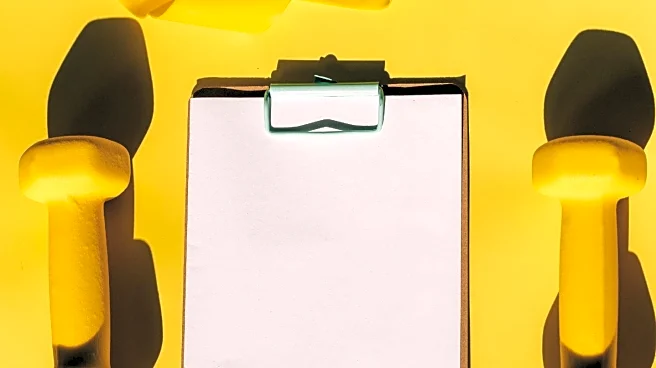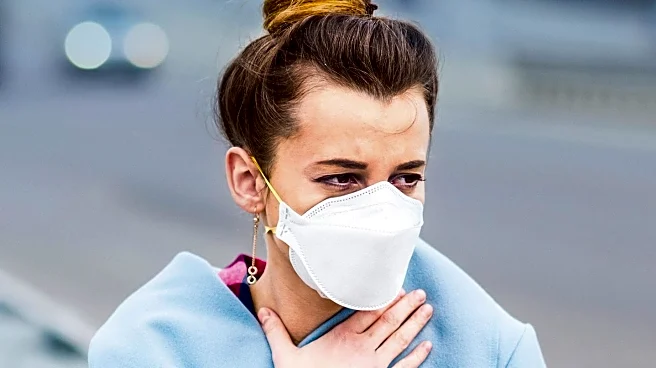What's Happening?
Researchers at National Taiwan University have created a multifunctional glowing hydrogel capable of ultra-sensitive detection of formaldehyde, a common air pollutant. This hydrogel, made from a network
of modified gelatin and sugar-based compounds, incorporates europium-containing particles that enhance its luminescent properties. The hydrogel can detect formaldehyde at levels as low as 39 parts per billion, significantly below the World Health Organization's safe limit. Its self-healing and injectable nature allows for versatile applications in various environments, offering a new platform for environmental monitoring.
Why It's Important?
The development of this hydrogel sensor is crucial for environmental health, providing a powerful tool for detecting harmful volatile organic compounds (VOCs) with high precision. Its ability to detect formaldehyde at such low concentrations could lead to improved air quality monitoring and regulatory compliance. The hydrogel's adaptability and self-healing properties make it suitable for long-term use in diverse settings, potentially reducing exposure to toxic pollutants and enhancing public health safety.
What's Next?
The research team plans to explore further applications of this hydrogel technology, potentially expanding its use to detect other VOCs. The adaptability of the hydrogel suggests it could be integrated into existing environmental monitoring systems, providing a more comprehensive approach to air quality assessment. Continued research and development may lead to commercial availability, offering industries and governments a new tool for pollution control.
Beyond the Headlines
The introduction of this hydrogel raises questions about the future of environmental monitoring technologies and their role in public health policy. As detection methods become more sophisticated, there may be increased pressure on industries to comply with stricter environmental standards. Additionally, the ethical considerations of deploying such sensitive detection systems in public spaces will need to be addressed.











